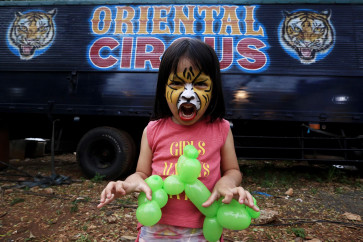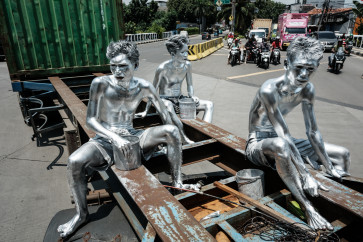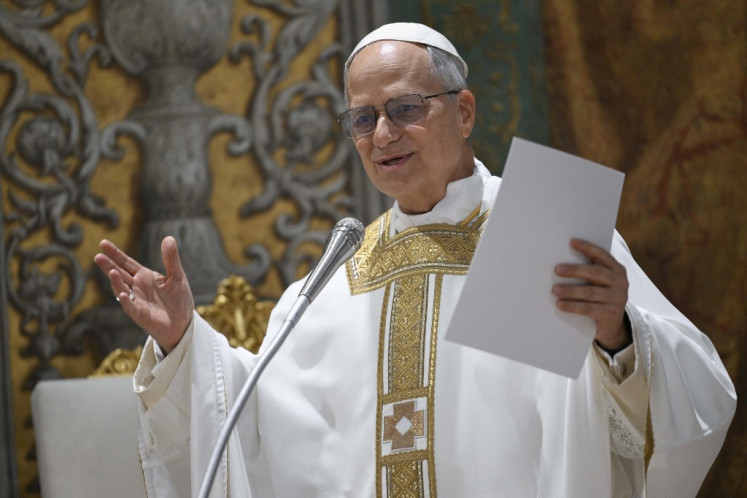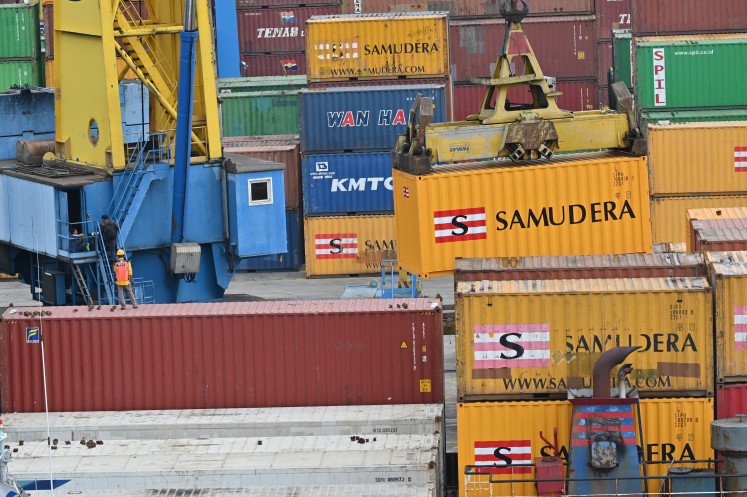Equality of opportunity: The currency of post-2015 development agenda
World leaders are now racing against time to meet the Millennium Development Goals (MDGs) target by 2015
Change text size
Gift Premium Articles
to Anyone

W
orld leaders are now racing against time to meet the Millennium Development Goals (MDGs) target by 2015. The MDG are a set of targets officially established following the Millennium Summit of the United Nations in 2000.
Those targets include halving extreme poverty, achieving universal primary education, promoting gender equality, reducing child mortality, improving maternal health, combating HIV/AIDS and other diseases, ensuring environmental sustainability and developing a global partnership for development.
Today, less than two years before the 2015 deadline, the gaps remain. According to the 2012 UN MDG progress chart, in five of the eight goals, there are still some areas in particular regions where no progress has occurred. In general, however, at the global level, progress is undeniable. The percentage of the population living on less than US$1.25 a day was 46 percent in 1990, in 2005 it was only 27 percent.
A target of 23 percent in 2015 seems certain. The percentage of the population with access to improved water sources was already 84 percent in 2008, very close to the target of 85.5 percent in 2015. In other areas, progress, to a lesser extent, is also apparent.
Despite much skepticism at the start over the effectiveness of the global goals, the global attention and the resources directed to the MDGs are proof that humankind can at least agree on and work toward some common goals. Without MDGs, the world today would not have been a better place.
A world with a globally-unified set of goals like MDGs is better than without it for at least three reasons. First, even though we live in a resource-constrained world where trade-offs are inevitable, focus and concentration on particular doable objectives are rare commodities among our political leaders. The MDGs exclude many other important aspects of development, yet they can focus on what is urgent. Second, it is common practice in national development policies where despite stated strong commitments to particular objectives, progress is not achieved due to a lack of measurable and quantifiable targets. The MDGs are very clear with targets and indicators. Third, global goals are more immune to nation-state political cycles that tend to be less forward-looking.
The development agenda of course will not end in 2015. The gaps in the progress of achieving MDGs still need to be filled in and more resources should be mobilized to address certain areas and regions where the gaps are the widest. However, old targets should also be improved. One aspect of improvement, among others, is the standard of poverty. The $1.25 per day extreme poverty line is very far from a tipping point of income above which all aspects of life are considered decent.
To escape from this predefined extreme poverty does not guarantee an improved life with dignity. It is barely survival living. We should start thinking of increasing the standard to $2 per day. Today, still more than half of the world’s population lives on less than $2 per day. In addition, dimensions of poverty should also be broadened beyond income poverty.
The key to poverty reduction is employment opportunity. The MDG target of universal primary enrollment does not guarantee improved livelihoods as having a primary education does not necessarily increase employment opportunities in many parts of the world. In gender issues, it is also hard to imagine a world without gender discrimination where more half than of the population still live on less than $2 per day.
Parents with such financial constraints will naturally send their boys, rather than girls, to school beyond primary education. This is not only a gender issue; it is a loss in potential economic productivity. Future development agendas beyond 2015 should address these issues more explicitly.
What was not explicitly-addressed in the MDGs, yet its urgency has increased recently, is inequality. Today, more than two-thirds of the world’s population live in countries where income inequality has risen since 1980. A recent Asian Development Bank report estimates that in most countries in Asia, the wealthiest 5 percent of the population account for 20 percent of total expenditure. The Gini coefficient, a standard measure of income inequality, in China increased to 0.43 in 2010, from 0.32 in the early 1990s. For India, the figure rose to 0.37 from 0.33 during the same period.
In Indonesia it jumped to 0.39 from 0.29. From 2009 to 2011, the Gini coefficient increased from 0.37 to 0.41, the highest ever recorded in Indonesian history. Inequality is not only bad for economic growth, it also reduces social cohesion.
In an attempt to address inequality in the post-2015 development agenda, two issues should be considered.
First, we should distinguish between inequality of outcome and inequality of opportunity. Borrowing a theory by a renowned philosopher, John Roemer of Yale University, inequality of outcome such as income among members of a society is not only a product of the inequality of effort or talent among individuals but also inequality in circumstances beyond the control of the particular individuals. Unlike policies of equalizing outcome, policies of equalizing opportunity by giving support to individuals with less conducive circumstances to level the playing field is more acceptable across different political spectrum, from left to right.
Second, equality of opportunity policies can be mainstreamed across different set of goals in the post 2015 development agenda more explicitly. For example, in allocating public spending on education, an equality of opportunity policy to be made explicit in the development goals, would allocate more money to particular members of a society with less favorable circumstances rather than the other way around.
Today in Indonesia, for example, public spending on secondary and higher education benefits the rich rather than the poor. This would be inconsistent with an equality of opportunity policy. This can be applied across all areas of development agendas. Equality of opportunity then should be the “currency” of the post-2015 development agenda if humankind agrees that the world beyond 2015 should be one with more prosperity as well as justice.
The writer is director of the Center for Economics and Development Studies (CEDS), Padjadjaran University, Bandung. The article is based on his presentation to the Global Development Network’s High Level Consultation and Policy Dialogue on Post-2015 MDGs, in New Delhi, on March 19, 2013.









